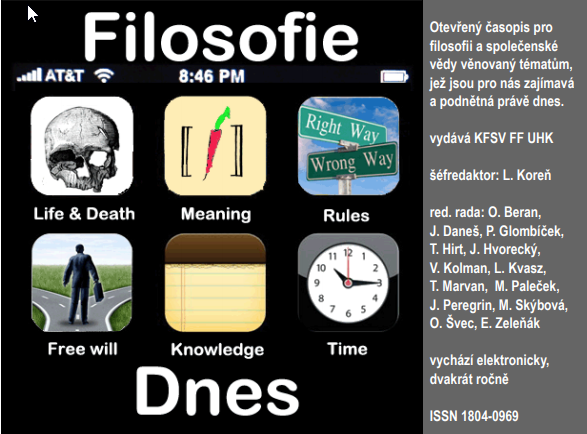Analogy and consciousness in a historical perspective
DOI:
https://doi.org/10.26806/fd.v5i1.119Keywords:
analogie, fenomén, vědomí, intencionalitaAbstract
The article is dealing with presentattion of historical changes in the understanding of and the meaning of analogy from antiquity through the crisis of the analogical concept in medieval period to its presently prevalent meaning, which the term gained at the onset of renaissance and scientific revolution. With this as a frame of reference, the change of human consciousness in the same time period is mapped – mainly its growing intentionality and the ability of reflection of one’s own cognitive activity and consciousness. The proposition is outlined, that the change in understanding and meaning of analogy directly corresponds with the development of intentional consciousness. The characteristic features of fully developed intentional consciousness is the experience of separation of man from the world (of the inward subject separated from the outward object). In the second part of the article a synthetic view is presented, in which the arisen gap between the man and the world is bridged by considering their relationship as essentially analogical.
Downloads
Published
Issue
Section
License
Authors who publish in this journal agree that:
1. Authors retain copyright and guarantee the journal the right of first publishing. All published articles are licensed under the Creative Commons Attribution license, which allows others to share this work under condition that its author and first publishing in this journal was acknowledged.
2. Authors may enter into other agreements for non-exclusive dissemination of work in the version in which it was published in the journal (for example, publishing it in a book), but they have to acknowledge its first publication in this journal.
3. Authors are allowed and encouraged to make their work available online (for example, on their websites) as such a practice may lead to productive exchanges of views as well as earlier and higher citations of published work (See The effect of open access).


